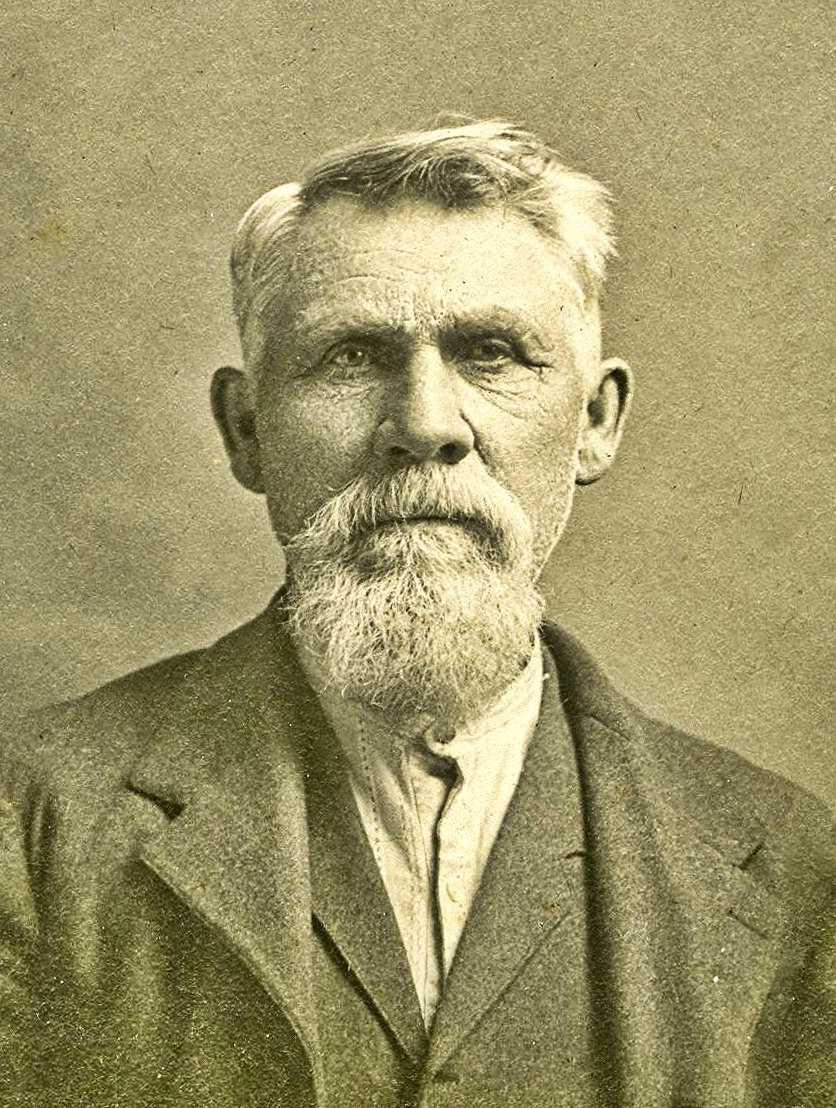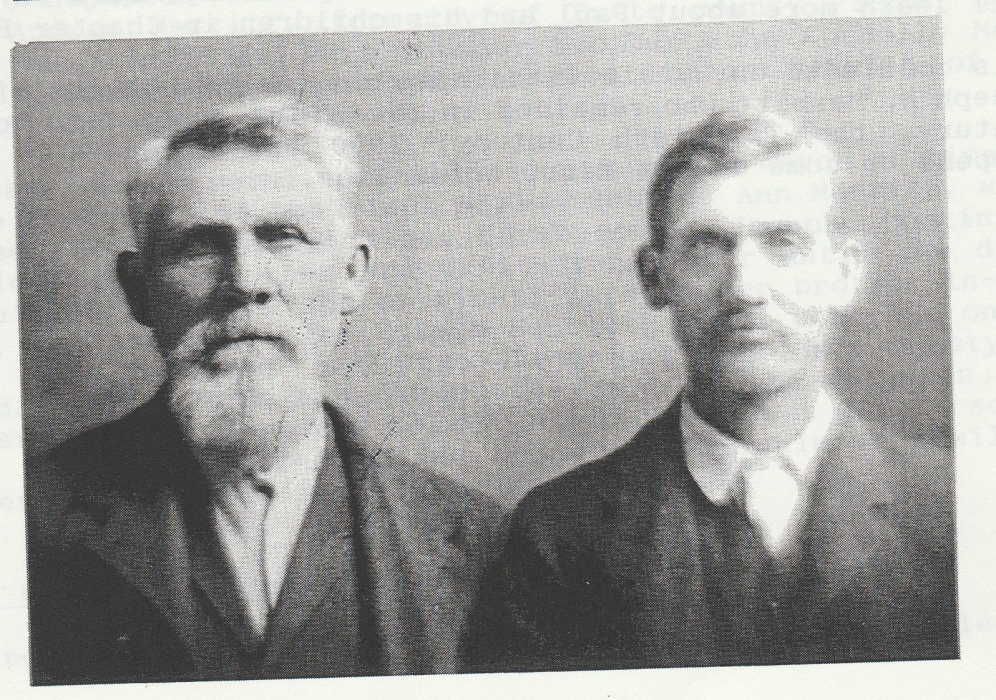By Covered Wagon to the Ponca Nebraska Hills. Charles and Sarah Ann remained in Iowa for four years after their marriage. Their first two children were born in Iowa: a daughter Hettie, born in 1869 and another daughter, Mary A., born about 1871. Then in 1872 Charles and Sarah packed up their things, their children, and moved west across Iowa in a covered wagon to the state of Nebraska. Nebraska had been a separate territory (1854) before becoming a state in 1867. Prior to 1854 it had been part of the territories of Louisiana and Missouri.
In October of 1872, Charles and Sarah arrived in Dixon county which lies in the northeastern corner of Nebraska. Those were tough beginnings for Charles and Sarah and their two daughters. On a largely treeless plain they did not have enough wood with which to build a house. Here, in Dixon county, it was mostly open prairie except along rivers and streams. Therefore Charles and Sarah and daughters first lived in a dugout, or as it is also known, a sod house. Sod houses were often built into the side of a slope or hill. To build a sod house one had to dig chunks of grass-covered soil from the ground and pile those chunks on top of one another to build the walls of the house. Of course the frame of the roof was wood, but the roofing itself was usually sod as well. Sod houses did have some advantages: they were relatively cool in the summer, and they were cheap to build.
From the Ponca Times, published in December 1977.
Charles Merritt Family
Charles and Sarah Merritt came to Dixon County from eastern Iowa in 1873 with a covered wagon carrying all their earthly possessions.
They settled on a farm in Silvercreek Township. They farmed for several years before retiring.
Charles and Sara had six children:
Bertha, married to Bill Miille; Hettie, married to Jim Kendall; Frank, married to Gertrude Mallory; Wylie, married to Edith Siegler; Mary Alice "Bird" married to Frank Putnam; and Lillie, married to Frank Paterson.
After Sarah died, Charles lived with his children and grandchildren. When he lived with his granddaughter Alice Odle, Irma (Foulks), who was preschool at that time, remembers the fun times she had with her great-grandfather.
Charles Merritt was a "nut" about getting his exercise. He would walk to town twice a day, strolling slowly with his hands behind his back. His full head of white hair and his full white beard made a striking picture.
When the weather was bad, and he could not get outside, he would pace across the kitchen and living room in the Odle home. Little Irma enjoyed these times because she would run along beside him and he would playfully try to catch her with his cane.
She also remembers the times when she would hide when he came back from one of his walks. He would look all over the house for her — even though he knew all the time where she was.
He also stayed with his granddaughter Esther Roth for awhile and with his daughter, Mrs. Lillie Patterson.
His last years were spent with his daughter Mr. and Mrs. Frank Putnam. Everd Putnam remembers how his grandfather would go up the stairs to bed and wind his watch at the top of the stairs every "night exactly at 9:00 o'clock.
Bessie Kirk remembers her grandfather as a man who read his Bible everyday and consistently prayed for his children and grand-children.
Charles Merritt lived a long life. He was buried in Silver Ridge Cemetery on his 95th birthday. Submitted by Irma Foulks
By Covered Wagon to the Ponca Nebraska Hills. Charles and Sarah Ann remained in Iowa for four years after their marriage. Their first two children were born in Iowa: a daughter Hettie, born in 1869 and another daughter, Mary A., born about 1871. Then in 1872 Charles and Sarah packed up their things, their children, and moved west across Iowa in a covered wagon to the state of Nebraska. Nebraska had been a separate territory (1854) before becoming a state in 1867. Prior to 1854 it had been part of the territories of Louisiana and Missouri.
In October of 1872, Charles and Sarah arrived in Dixon county which lies in the northeastern corner of Nebraska. Those were tough beginnings for Charles and Sarah and their two daughters. On a largely treeless plain they did not have enough wood with which to build a house. Here, in Dixon county, it was mostly open prairie except along rivers and streams. Therefore Charles and Sarah and daughters first lived in a dugout, or as it is also known, a sod house. Sod houses were often built into the side of a slope or hill. To build a sod house one had to dig chunks of grass-covered soil from the ground and pile those chunks on top of one another to build the walls of the house. Of course the frame of the roof was wood, but the roofing itself was usually sod as well. Sod houses did have some advantages: they were relatively cool in the summer, and they were cheap to build.
From the Ponca Times, published in December 1977.
Charles Merritt Family
Charles and Sarah Merritt came to Dixon County from eastern Iowa in 1873 with a covered wagon carrying all their earthly possessions.
They settled on a farm in Silvercreek Township. They farmed for several years before retiring.
Charles and Sara had six children:
Bertha, married to Bill Miille; Hettie, married to Jim Kendall; Frank, married to Gertrude Mallory; Wylie, married to Edith Siegler; Mary Alice "Bird" married to Frank Putnam; and Lillie, married to Frank Paterson.
After Sarah died, Charles lived with his children and grandchildren. When he lived with his granddaughter Alice Odle, Irma (Foulks), who was preschool at that time, remembers the fun times she had with her great-grandfather.
Charles Merritt was a "nut" about getting his exercise. He would walk to town twice a day, strolling slowly with his hands behind his back. His full head of white hair and his full white beard made a striking picture.
When the weather was bad, and he could not get outside, he would pace across the kitchen and living room in the Odle home. Little Irma enjoyed these times because she would run along beside him and he would playfully try to catch her with his cane.
She also remembers the times when she would hide when he came back from one of his walks. He would look all over the house for her — even though he knew all the time where she was.
He also stayed with his granddaughter Esther Roth for awhile and with his daughter, Mrs. Lillie Patterson.
His last years were spent with his daughter Mr. and Mrs. Frank Putnam. Everd Putnam remembers how his grandfather would go up the stairs to bed and wind his watch at the top of the stairs every "night exactly at 9:00 o'clock.
Bessie Kirk remembers her grandfather as a man who read his Bible everyday and consistently prayed for his children and grand-children.
Charles Merritt lived a long life. He was buried in Silver Ridge Cemetery on his 95th birthday. Submitted by Irma Foulks
Family Members
Sponsored by Ancestry
Advertisement
Explore more
Sponsored by Ancestry
Advertisement























